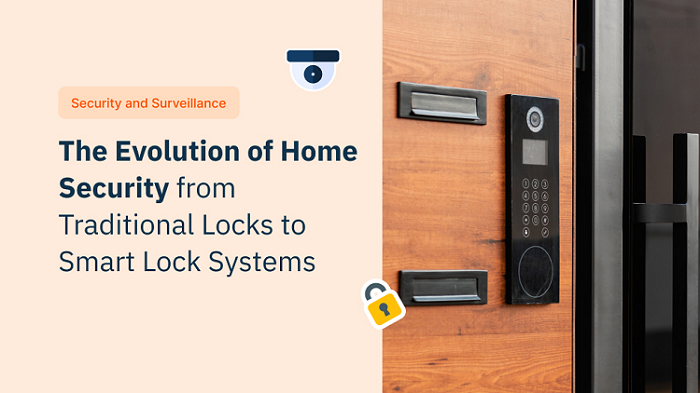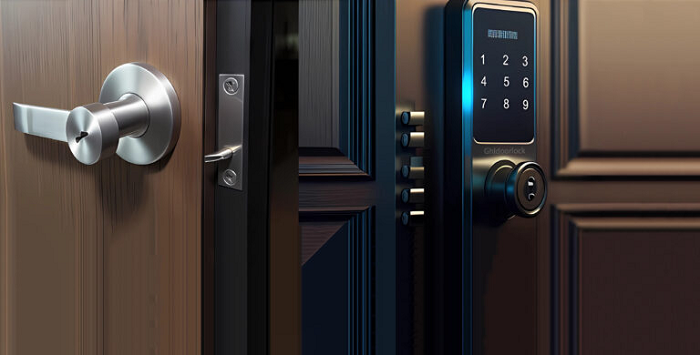Technology and Types of Modern Locks: Evolution, Benefits, and Applications
2025-01-22 10:00
Locks have been integral to human society for thousands of years, evolving from simple wooden devices to highly advanced systems incorporating cutting-edge technologies. With increasing concerns about safety and the development of Lock Pick Sets, the types of locks available today offer greater convenience, improved safety, and more robust protection. Let’s take a deeper look at modern technology and different types of modern locks, highlighting their advantages and applications.

1. Mechanical Locks: The Traditional Workhorse
Mechanical locks are the oldest and most traditional form of locking mechanism. These locks typically rely on a physical metal pin or gear system to control the locking and unlocking process. Mechanical locks are known for their simplicity, stability, and durability, making them a staple in residential and commercial properties for many years.
How Mechanical Locks Work
In a mechanical lock, the key is inserted into the lock cylinder, which aligns the pins or tumblers inside the lock to a specific position. Once all the pins are aligned correctly, the lock opens, allowing the bolt to move and granting access. The design of these locks varies, but the principle remains largely the same. Common mechanical locks include pin-tumbler locks, wafer locks, and lever locks.
Advantages
Durability and Reliability: Mechanical locks are made from sturdy materials like steel or brass, making them resistant to wear and tear.
Low Maintenance: These locks require minimal maintenance and have no reliance on batteries or electronic components.
Cost-Effectiveness: Mechanical locks tend to be more affordable than their electronic or smart counterparts, making them a popular choice for homes and businesses with limited budgets.
Disadvantages
Vulnerability to Lockpicking: Skilled lockpickers can bypass mechanical locks if they know the techniques.
Limited Features: Unlike modern electronic or smart locks, mechanical locks do not offer additional features such as remote access or integration with security systems.
Applications
Mechanical locks are often used in applications where simplicity and reliability are the key requirements. These locks are typically seen in:
Residential homes and apartments
Safes and vaults
Basic office doors and cabinets
2. Electronic Locks: The Rise of Digital Security
With the advancement of technology, electronic locks have revolutionized the way we think about security. These locks use electronic components to control the locking mechanism, and they offer various methods of authentication such as passwords, key cards, or biometric scans (e.g., fingerprints).
How Electronic Locks Work
Electronic locks typically use a motorized mechanism that is controlled by an electronic circuit. When a valid password, key card, or biometric input is provided, the electronic circuit sends a signal to unlock the mechanism, allowing the door or access point to open.
.jpg)
Advantages
Convenience: Electronic locks eliminate the need for traditional keys, which can be lost or stolen. Users can access their property using a code, key card, or even their mobile phone.
Improved Security: These locks often feature advanced security features like encrypted communication, time-based access restrictions, and automatic locking.
Audit Trail: Many electronic locks keep a log of who accessed the area and when, providing an added layer of accountability for businesses or secure locations.
Disadvantages
Battery Reliance: The majority of electronic locks operate on batteries, which require regular replacement to ensure continued functionality. If the battery dies and there’s no backup power source, the lock could fail.
Cost: Electronic locks tend to be more expensive than mechanical locks due to the complexity of their components and technology.
Applications
Electronic locks are widely used in places where high security and easy access are required. Common applications include:
Hotels (key cards for room access)
Offices (employee access cards)
Hospitals (restricted areas)
Smart homes (digital door locks)
3. Smart Locks: The Future of Home Security
Smart locks represent the pinnacle of modern lock technology, combining traditional locking mechanisms with IoT (Internet of Things) capabilities. These locks offer advanced features such as remote control via smartphone apps, voice assistant integration, and biometric authentication (e.g., fingerprint or facial recognition).
How Smart Locks Work
Smart locks use wireless technologies like Bluetooth, Wi-Fi, or Z-Wave to communicate with mobile applications or home automation systems. This allows users to remotely control the lock from their smartphones or other connected devices. Additionally, many Smart Locks feature hands-free unlocking capabilities, utilizing sensors such as proximity detection, voice commands, or even facial recognition to unlock doors when an authorized user is nearby.
Advantages
Remote Access: A key advantage of smart locks is the ability to control access from virtually anywhere in the world using a smartphone. You can lock or unlock doors without being physically present.
Seamless Integration with Smart Home Systems: Smart locks can be integrated with various smart home technologies, such as security cameras, lighting, and thermostats. This integration allows for a fully connected home, enhancing convenience and security by allowing multiple devices to work together.
Ease of Use: With smart locks, there’s no need to worry about lost keys or manually locking and unlocking doors. You can effortlessly manage access for family, friends, or service providers with just a few taps on your phone.
Disadvantages
Dependency on Technology: While convenient, smart locks depend on a stable internet connection or Bluetooth functionality. If there’s a technical issue, such as a weak signal or app malfunction, users may face difficulties accessing their property.
Privacy Concerns: As smart locks are connected to the internet, there are concerns regarding data privacy and hacking risks. Improperly secured locks could potentially allow unauthorized access.
Battery Life: Like Electronic Locks, smart locks are powered by batteries, and users must regularly monitor and replace them to avoid lockouts.

Applications
Smart locks are becoming increasingly popular in residential homes, particularly in:
Smart homes (automated systems)
Airbnb and short-term rental properties (remote access for guests)
Offices (remote management and enhanced security)
Conclusion
The evolution of lock technology from traditional mechanical locks to advanced smart locks has significantly improved security, convenience, and control. As technology continues to advance, we can expect even more sophisticated locking systems that offer enhanced safety, integration with other smart technologies, and even greater ease of use. Whether you’re securing a home, business, or sensitive location, the right lock technology can better protect your property.

 Like Us on Facebook to enjoy 5% discount
Like Us on Facebook to enjoy 5% discount